Nilotica Shea butter: The 3 most important things buyers need to know
- 31
- Jul
Shea Butter – Women’s Gold
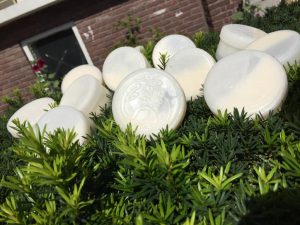
Nilotica Shea butter sample form Uganda
Native to East Africa, Nilotica Shea butter is extracted from the Nilotica Shea tree containing higher therapeutic and conditioning properties than its cousin species Paradoxa sourced from West Africa. It is prized for its intensive moisture, suppleness and gentle nutty scent.
The 3 most important things buyers need to know about Nilotica Shea butter
- Nilotica Shea tree grows exclusively in East Africa.
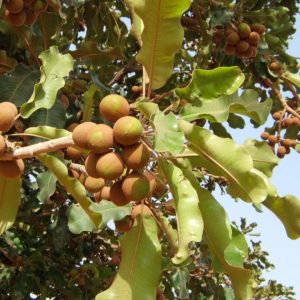
Shea nuts of the Vitellaria Nilotica tree, a sub-species of the Karite tree
Nilotica Shea trees only grow in East Africa (Northern Uganda and South Sudan), explaining its premium status. Whereas, conventional Paradoxa Shea butter is sourced from Shea trees in West Africa where it grows in abundance.
Nilotica trees grow in the wild and undergo a cycle each year where they lose their leaves, bloom, fruit and regenerate. Each year, the tree becomes progressively more productive and can grow for more than 300 years. The fruiting of the Shea trees occurs between May and July when the fruits are ready to be picked.
2. Nilotica Shea butter is considered a more luxurious product compared to its cousin species like Paradoxa.
Nilotica Shea butter contains special properties setting it apart from its cousin species Paradoxa and representing a unique selling point for buyers to showcase their finished product.
It has a creamy texture given the high olein content making it easier to spread and absorb into the skin or hair. The buttery texture comes from its moisturising properties protecting the skin from drying and deeply nourishing hair from the root. It is packed with vitamins with anti-aging properties to reduce the appearance of fine lines, and anti-oxidant compounds to enhance the microcirculation in the skin for improved brightness. Nilotica Shea butter contains nutrients with high healing fractions for the treatment of eczema and skin allergies. It also has anti-inflammatory properties soothing skin outbreaks and is perfect for protecting babies’ skin against nappy rashes.

Shea butter on the skin
3. Nilotica Shea butter nourishes opportunities for women in East Africa.
Shea butter production and processing is predominately female. Women farmers adopt traditional methods of wet extraction. The basic processing of Nilotica Shea butter goes as follows. Women pick the Shea nuts from the Shea tree which are then cracked, roasted and pounded to extract the butter. In this particular case of farmers in Northern Uganda, they cold-press the cracked nuts, which prevents the nutrients from burning. Women knead the paste and purify it by boiling it in water until the fresh Shea butter rises to the surface. The traditional method for extraction by water does not add solvents or harsh chemicals, maintaining the valuable vitamins A and E.
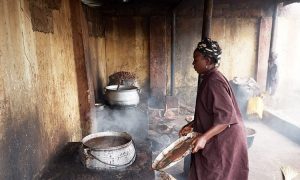
Traditional methods by boiling for the extraction of the butter
Shea trees grow on land that is either owned by men or the State, meaning women farmers must request a permit to access land. Exclusionary legislations and gendered biases that govern the value chain organisation sideline women from opportunities to engage with stakeholders in the most profitable nodes of the value chain. On the positive side, African states are engaging in political efforts towards gender inclusiveness manifested in national policy strategies and making amendments of exclusionary legislations.
It is recommended that governments and third parties understand the gender relations that govern separate value chains to support an enabling legal and policy environment and inform how to plan and implement correctly gender-sensitive strategies.
Why Europe is an interesting market for Nilotica Shea butter?
There is an increasing demand for Shea butter on the European cosmetic market, driven by more Europeans taking self-care more seriously and having a greater awareness of the ingredients and country of origin in their personal care products. This explains the trend in the soaring sales of organic and naturally sourced products. A pattern that is expected to continue in the future.
The Global Shea Alliance estimates the global Shea butter market will be worth US$1.74 billion come in five years. Europe is the main export market for finished cosmetic products containing Shea butter where around 250,000 tonnes are traded annually. The most attractive countries for cosmetic products containing Shea butter are France, Italy and Germany where the cosmetic market is well-advanced. The Netherlands is home to important refineries where nuts are processed and then re-exported to other European destinations.
Where does EuroAfri Link come into play?
Our role here is to match our Shea butter supplier like from Uganda with European buyers ensuring the creation of win-win collaborations that are inclusive, sustainable and fair. Accessing export markets presents a barrier for African agribusinesses that lack or have limited market information. With our research-informed practices and market know-how, EuroAfri Link acts as a mediator between buyer and supplier ensuring the transaction process from initial contact to order delivery is hassle-free.
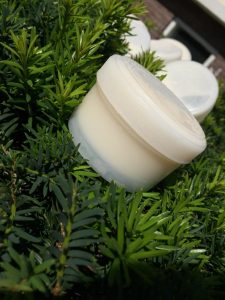 After organic food, green consumer behaviour is trending in the choice of Europeans for cosmetics that contain clean and raw natural ingredients. The European cosmetic industry continues to spend in developing products featuring unconventional ingredients. Shea butter is highly regarded by European consumers and the Nilotica species could do the trick to meet rising consumer demands.
After organic food, green consumer behaviour is trending in the choice of Europeans for cosmetics that contain clean and raw natural ingredients. The European cosmetic industry continues to spend in developing products featuring unconventional ingredients. Shea butter is highly regarded by European consumers and the Nilotica species could do the trick to meet rising consumer demands.
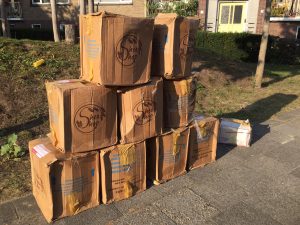
Authors: Claudia Zaccari, Project officer @ EAl in charge of EU-Africa cooperation and Patience Chindong, co-founder, EAL
